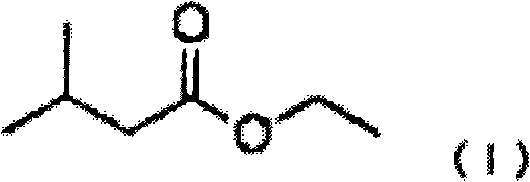Roasted coffee beans and method for storing roasted coffee beans
A technology for roasting coffee and coffee beans, which is applied in the field of preservation of roasted coffee beans, can solve the problem of flavor reduction, and achieve the effect of rich aroma and full-bodied feeling
- Summary
- Abstract
- Description
- Claims
- Application Information
AI Technical Summary
Problems solved by technology
Method used
Image
Examples
Embodiment 1
[0076] Example 1. Production of fermented coffee beans (1)
[0077] Fermented coffee beans are manufactured through the following processes;
[0078] 1) A steam treatment process in which coffee cherries are steamed at 90 to 110°C for 15 to 30 seconds,
[0079] 2) The process of cooling to 30-40°C,
[0080] 3) Adding 0.05 to 0.5% by weight of adipic acid or lactic acid per unit weight of coffee cherries to adjust the pH of the coffee cherries to pH 3 to 4,
[0081] 4) Simultaneously with or after the pH adjustment step, a microorganism attachment step for attaching fermentation microorganisms is performed,
[0082] 5) 30 ~ 40 ℃, 48 ~ 72 hours of cultivation process,
[0083] 6) A drying process for drying the cultivated coffee cherries,
[0084] 7) The process of separating and refining coffee pulp from coffee seeds to obtain fermented coffee beans.
[0085] That is, 100 kg of coffee fruit (Arabian species produced in Brazil) was prepared, and the above-mentioned proces...
Embodiment 2
[0096] Example 2. Production of fermented coffee beans (2)
[0097] In Guatemala, green coffee beans are usually washed from the coffee cherries. After the harvested fruit is put into the water tank to remove foreign matter, it is put into the pulp remover to remove the pulp, and then put into the water tank to remove the mucus attached to the parchment paper, and then dried under the sun or mechanically for shelling. This is because the cultivation site is on the slope of a mountain, and there is no place to spread the fruit to dry after harvesting, so it is an inevitable method.
[0098] On the other hand, Brazil and other places have vast plains where a large amount of fruit can be dried at one time, and the harvesting period is the dry season, so there is no need to worry about rain, so the non-washing method (also called natural method) is used for refining. It has the following characteristics, that is, the harvested fruit is spread directly on the square, dried in th...
Embodiment 3
[0100] Example 3. Preservation test of roasted coffee beans (1)
[0101] 1. Sensory evaluation of roasted coffee beans
[0102] Add ethyl isovalerate (manufactured by Tokyo Kasei Kogyo Co., Ltd.) to the roasted coffee beans that are moderately roasted (L value: 19.5) in a horizontal (horizontal) cylinder roaster (hot air type) from Brazil. Ethanol solution, so that the content of ethyl isovalerate relative to the total amount of roasted coffee beans is 10, 30, 50, 100, 200ppb (v / w) (respectively referred to as 10ppb additives, 30ppb additives, 50ppb additives, 100ppb additives, 200ppb additives). After stirring at room temperature for several minutes, heat and stir on an electric heating furnace at about 100°C for about 20 minutes, and stop heating and stirring when the weight of the roasted coffee beans is substantially the same as that before adding the ethanol solution. 120 g of the roasted coffee beans were put into an aluminum bag (product name: Lamizip AL-12) with a ...
PUM
 Login to View More
Login to View More Abstract
Description
Claims
Application Information
 Login to View More
Login to View More - R&D
- Intellectual Property
- Life Sciences
- Materials
- Tech Scout
- Unparalleled Data Quality
- Higher Quality Content
- 60% Fewer Hallucinations
Browse by: Latest US Patents, China's latest patents, Technical Efficacy Thesaurus, Application Domain, Technology Topic, Popular Technical Reports.
© 2025 PatSnap. All rights reserved.Legal|Privacy policy|Modern Slavery Act Transparency Statement|Sitemap|About US| Contact US: help@patsnap.com



